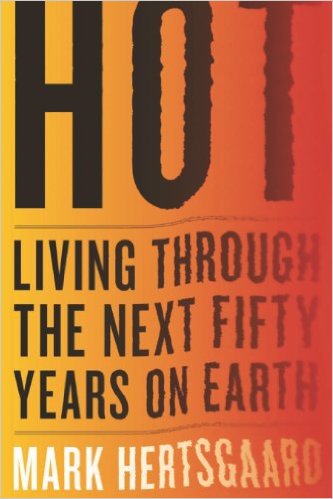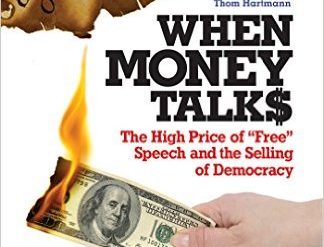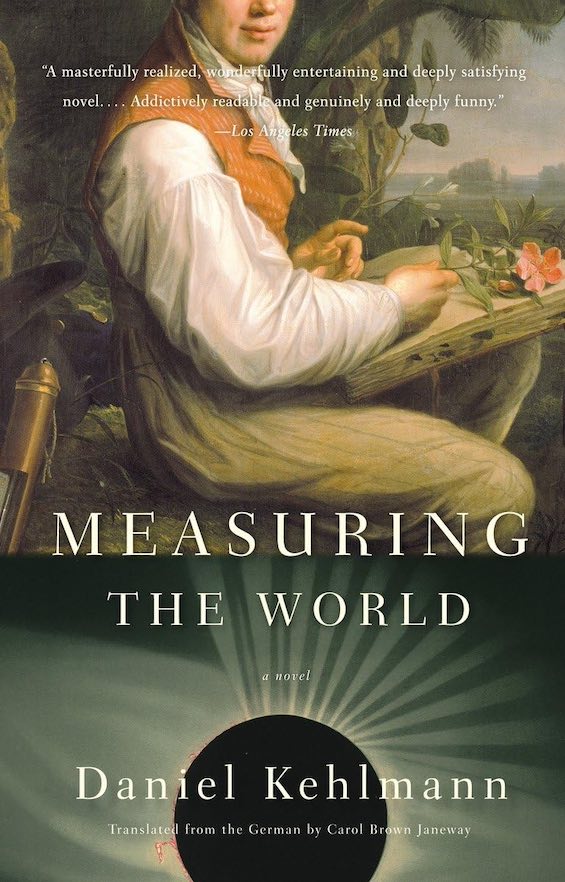
We are now at least a decade into what journalist Mark Hertsgaard terms the “second era of global warming,” which began sometime around the turn of the 20th century. As he writes, “The battle to prevent dangerous climate change was now over; the race to survive it has begun.”
Estimated reading time: 5 minutes
Hertsgaard probably has as broad and deep an understanding of global warming and its consequences in the form of climate change of any nonscientist on the planet. He has been writing about the topic for more than two decades and has interviewed most of the major players in climate science climate-related government policy not just for this book, which involved five years of travel around the world, but for Earth Odyssey, a widely read investigation published in 1999 that reflected seven years of travel. The man knows whereof he writes!
A path forward through the next fifty years
Hot is the author’s attempt to find a hopeful path forward through the gathering storm of climate change. Throughout, he ponders the life his young daughter, Chiara, will face in adulthood. Much of Hot is written in an optimistic tone. Hertsgaard explores a laundry list of policies and procedures that, if widely implemented, will permit humanity to forestall the extremes of climate change and to adapt to its nonetheless unavoidable consequences.
Some of the practices he touts — painting roofs white and planting trees in African fields, for example — could, in fact, achieve a great deal if universally employed. His theme is “Avoid the unmanageable, manage the unavoidable.” Distinguishing between mitigation — efforts to reduce carbon emissions — and adaptation — finding ways to adjust to the changing climate — Hertsgaard devotes most of the book to the latter. Previous writing on global warming has tended to focus on mitigation, which heavily involves government and corporate policy. Adaption consists largely of changing the way people and communities behave.
Hot: Living Through the Next Fifty Years on Earth by Mark Hertsgaard ★★★★☆
Unfortunately, though, the context in which he writes is not encouraging. We live in a world in which massive corporations spend millions to protect their short-term profits regardless of the consequences, major news media reflect the views of their corporate owners, the overwhelming majority of people deny the obvious, and policymakers demonstrate their affinity for the art of the possible rather than showing true leadership. To a knowledgeable reader, much of the optimism in Hot seems forced.
What it all boils down to is this: “We face a towering challenge. Countries that today are all but addicted to fossil fuels must quit carbon within the next two to three decades. Deforestation and other climate-damaging activities must also be brought to a halt worldwide. And even poor and emerging economies must halt almost all emissions by 2050. Yet even if we manage all this, it will give us merely a two-out-of-three chance to limit temperature rise to 2 degrees C about preindustrial levels, itself an achievement of dubious merit, for it will mean the lost of most of the world’s coral reefs, the disappearance of most of its mountain snowpacks, and enough sea level rise, eventually, to inundate the existing coastlines on every continent.”
The existential threat of climate change
The facts are disturbingly grim: even if the human race somehow manages to come to grips with the existential threat of climate change and to do everything recommended by the authors of the most alarming scientific reports, we are already locked into at least 30 years, and possibly as many as 50 years, of serious trouble. “Climate change will worsen existing conflicts over water supplies, energy sources, and weather-induced migration . . . Economic prosperity is also endangered. Approximately 25 percent of the gross national product of the United States is at risk from extreme weather events, according to the American Meteorological Society and the American Geophysical Union.”
One of the greatest threats to civilization lies in our oceans. “Three feet of sea level rise over the next hundred years — which is near the low end of what scientists now expect — will pose enormous challenges . . . [S]ome scientists believe our civilization could experience three feet of sea level rise within the next fifty years.”
Perhaps equally problematic is the certainty of increasing drought. Much of Africa, a large swath of South Asia, and large portions of the United States, especially California, the Southwest, and the Great Plains, face intensifying water shortages.
Can we possibly anticipate the future?
There is no lack of horror stories available to illustrate the havoc these trends can create. However, over and above all the computer-modeled predictions for a steady increase in global temperatures over the coming decades is a much more horrific possibility: the potential that some unanticipated combination of circumstances will trigger “positive feedbacks that, in the worst case, could kick off some type of runaway greenhouse dynamics.”
As Hertsgaard explains, “Unfortunately, there is ample precedent for this kind of abrupt shift into climate chaos. Although the human mind tends to think in gradual, linear terms, ice records and other historical data show that climate shifts, when they occur, tend to happen suddenly and exponentially.”
Worrying about rising temperatures and their consequences is bad enough. But it’s the potential of a “sudden and exponential” shift that keeps me awake nights.
For related reading
For a later perspective on the issues raised in this book, see The Heat Will Kill You First: Life and Death on a Scorched Planetby Jeff Goodell (This book might save your life).
This is one of the books I’ve included in my post, Gaining a global perspective on the world around us. It’s also one of many Good books about climate change I’ve reviewed here.
It’s also one of 20 good nonfiction books about the future.
Like to read books about politics and current affairs? Check out Top 10 nonfiction books about politics.
If you enjoy reading nonfiction in general, you might also enjoy:
- Science explained in 10 excellent popular books
- Great biographies
- Top 10 nonfiction books about politics
And you can always find my most popular reviews, and the most recent ones, on the Home Page.




























I got a heads up on a paper last year published in PNAS that said that there is a 5% chance that by 2100, during summer months, an unprotected person will literally not be able to survive outside. It will be so hot and humid that a person will not be able to shed heat in the form of sweat. One of the few places in the world right now with this kind of climate is in Saudi Arabia near the Persian Gulf. The projection was this kind of climate in the northern hemisphere as far as latitude 60 north. I agree that we have gone well past the point where we can even hope to prevent what is going to happen – we can only adapt. I don’t think the people of this country will even begin to act until coastal cities are inundated. Al Gore was right, we are frogs in a steadily warming pot of water – especially here in the US. On the bright side – there will be a lot of people needed to build dikes around NY, Miami, DC, San Francisco . . . .